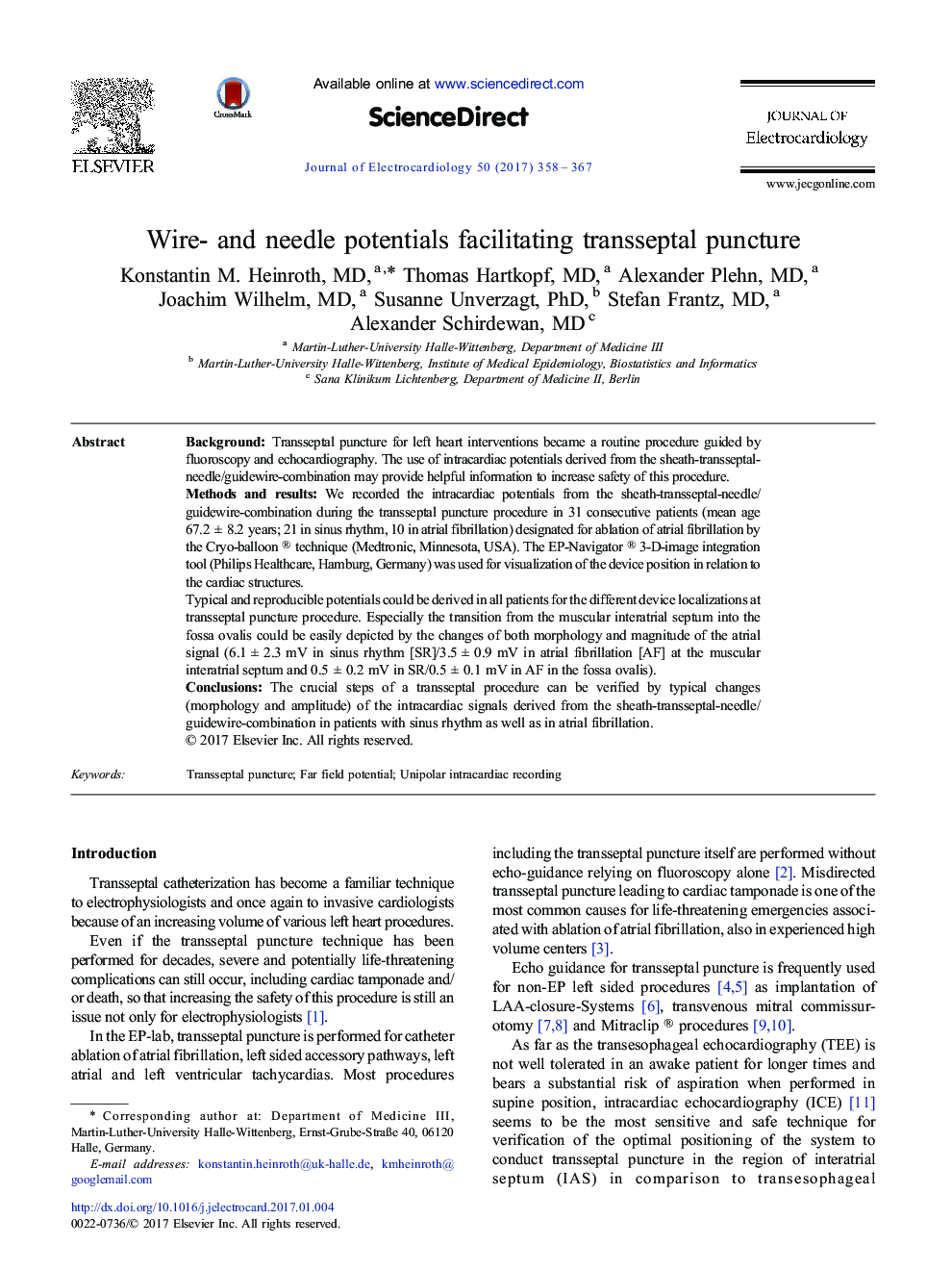| Article ID | Journal | Published Year | Pages | File Type |
|---|---|---|---|---|
| 5615619 | Journal of Electrocardiology | 2017 | 10 Pages |
â¢The guidewire and the sheath-transseptal-needle/guidewire-combination can be used to derive intracardiac potentials at transseptal puncture procedures.â¢The crucial steps of the transseptal procedure can be verified by typical and specific changes of the intracardiac signals both in morphology and magnitude.â¢These intracardiac signals are reliable in sinus rhythm as well as in atrial fibrillation in first and in redo-procedures.
BackgroundTransseptal puncture for left heart interventions became a routine procedure guided by fluoroscopy and echocardiography. The use of intracardiac potentials derived from the sheath-transseptal-needle/guidewire-combination may provide helpful information to increase safety of this procedure.Methods and resultsWe recorded the intracardiac potentials from the sheath-transseptal-needle/guidewire-combination during the transseptal puncture procedure in 31 consecutive patients (mean age 67.2 ± 8.2 years; 21 in sinus rhythm, 10 in atrial fibrillation) designated for ablation of atrial fibrillation by the Cryo-balloon ® technique (Medtronic, Minnesota, USA). The EP-Navigator ® 3-D-image integration tool (Philips Healthcare, Hamburg, Germany) was used for visualization of the device position in relation to the cardiac structures.Typical and reproducible potentials could be derived in all patients for the different device localizations at transseptal puncture procedure. Especially the transition from the muscular interatrial septum into the fossa ovalis could be easily depicted by the changes of both morphology and magnitude of the atrial signal (6.1 ± 2.3 mV in sinus rhythm [SR]/3.5 ± 0.9 mV in atrial fibrillation [AF] at the muscular interatrial septum and 0.5 ± 0.2 mV in SR/0.5 ± 0.1 mV in AF in the fossa ovalis).ConclusionsThe crucial steps of a transseptal procedure can be verified by typical changes (morphology and amplitude) of the intracardiac signals derived from the sheath-transseptal-needle/guidewire-combination in patients with sinus rhythm as well as in atrial fibrillation.
